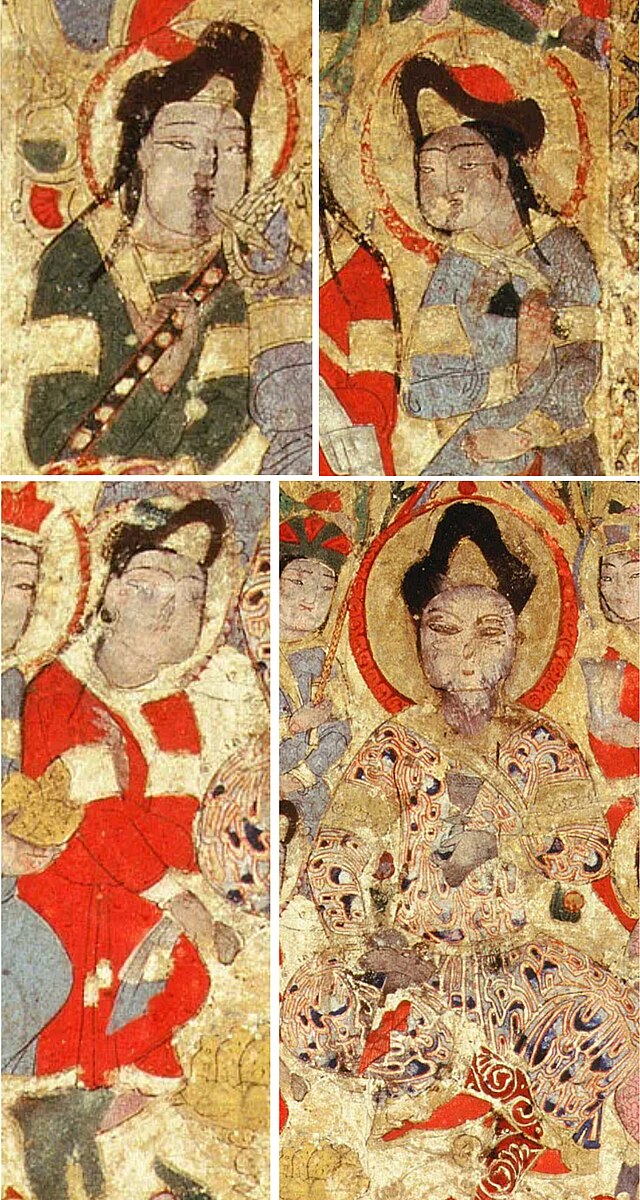Top Qs
Timeline
Chat
Perspective
Sharbush
Medieval military hat From Wikipedia, the free encyclopedia
Remove ads
The Sharbush or Harbush, Sarposh, Serpush (Arabic: شَربوش, romanized: sharbūsh, Greek: σαρπούζιν, Turkish: Serpuş) probably derived from the Persian word Sarpush,[1] which means "headdress".[2] was a special Turkic military furred hat worn in Central Asia and the Middle East in the Middle Ages. It appears prominently in the miniatures depicting Badr al-Din Lu'lu' (ruled 1234–1259).[3] It was a stiff cap of the military class, with a triangular front which was sometimes adorned with a metal plaque. It was sometimes supplemented with a small kerchief which formed a small turban, named takhfifa.[4] The wearing of the Sharbūsh was one of the key graphical and sartorial elements to differentiate Turkic figures from Arab ones in medieval Middle-Eastern miniatures.[5]

The Sharbush could vary in size and shape, sometimes taking huge proportions, as in the depiction of the emir in the frontispiece of the 1237 Maqamat of al-Hariri.[5] The shape of the sharbush seems to have varied depending on geographical regions:
- The sharbush of Artuqid manuscripts (example) has a very tall cap behind the headplate and the usage of fur around the rim is limited;[6]
- The Seljuk sharbush as seen on Persian ceramics, or on objects from Mosul such as the Blacas ewer, or in Jazira and Syria manuscripts had a much lower cap, almost hidden behind the band of fur surrounding the head and the frontal plate;[6]
- The frontispiece of the Baghdad Schefer Maqamat shows another sharbush, consisting of a tall mass of fur, hiding the cap from view.[6]
The sharbush headgear was a rallying sign for Saladin, and he wore it on his Mayyafariqin coinage.[7][8] When Henry II, Count of Champagne, king of Jerusalem, tried to build a friendly relationship with Saladin, he requested the gift of a qabā robe and a sharbūsh hat, which he wore in Acre.[9][10][11]
The Sharbush was also a symbol of investitute under the Egyptian Mamluks, as it was part of the khil'a given to an amir on the occasion of his accession.[8] The sharbush was worn by high-ranking officers of the Ayyubid and Bahri Mamluk period.[12][13]
In Mamluk Egypt, the wearing of the Sharbush was banned in 1382.[14][15]
- Right frontispiece: ruler in Turkic dress (long braids, large Sharbush fur hat, boots, fitting coat), in the Maqamat of al-Hariri, 1237 CE, probably Baghdad.[5]
- Turkic amir with guards, wearing the Turkic headgear Sharbush, in the preaching scene at Rayy in maqāma 21 (fols. 58v–59r), Maqamat of al-Hariri, 1237.[16][5]
- Warrior in Turkic attire, wearing the Turkic headgear sharbush, De Materia Medica of Dioscorides, Iraq, 1224. Harvard Art Museums.[17]
- Artuqid sharbush, 1206 (Ms. Ahmet III 3472)
- Sharbush of Badr al-Din Lu'lu' (Kitab al-Aghani, 1219 CE)
- Maqamat al-Hariri (BNF Arabe 3929, circa 1200-1210), Turkic ruler detail wearing the sharbūsh with the tall cap
- Maqamat al-Hariri (BNF Arabe 6094), Jazira region, 1222
- Donor figure wearing sharbush, qaba and tiraz. Church of the Archangels, Zemo-Krikhi, Racha, northern Georgia. 11th century, Inv. No. 03086-75.[21]
Remove ads
See also
References
Wikiwand - on
Seamless Wikipedia browsing. On steroids.
Remove ads











